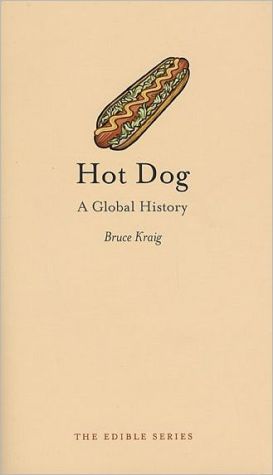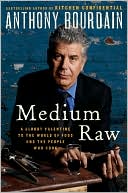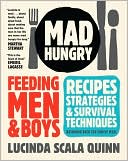Hot Dog: A Global History
Char-grilled or boiled? Sauerkraut or chili? Mustard or ketchup? Vienna Beef or Sabrett? Only these questions could be raised about one of the world’s favorite backyard, picnic, ballgame, and street foods—the hotdog. Though nearly two billion hot dogs are consumed by Americans annually in the month of July alone, there is absolutely no consensus on which is the right way to serve up a hotdog. In Hot Dog, well known food historian Bruce Kraig recounts the history of this popular “tube steak”...
Search in google:
Char-grilled or boiled? Sauerkraut or chili? Mustard or ketchup? Vienna Beef or Sabrett? Only these questions could be raised about one of the world’s favorite backyard, picnic, ballgame, and street foods—the hotdog. Though nearly two billion hot dogs are consumed by Americans annually in the month of July alone, there is absolutely no consensus on which is the right way to serve up a hotdog. In Hot Dog, well known food historian Bruce Kraig recounts the history of this popular “tube steak” from the origin of the sausage 20,000 years ago to its central place in American culture today. Kraig discusses the many brands, including Hebrew National, Pearl, Sabrett, and Vienna Beef, and the regional variations that go along with them—like kosher-style New York dogs loaded with mustard and sauerkraut, New England dogs with Boston Baked Beans, and fully-loaded Chicago style hotdogs, complete with mustard, onion, relish, sport peppers, a dill pickle spear, a dash of celery salt, and tomato slices (but never, ever ketchup). Hot Dog covers the other international sausages, like bologna and bockwurst, as well, and explores some of the apocryphal tales of the hotdog in history—like the origin of its name and whether Queen Elizabeth II was truly served hotdogs on a visit to the White House. Packed with tasty facts and recipes, Hot Dog reveals the rich history and passionate opinions about this seemingly ordinary food. Publishers Weekly Starred Review. In this slim and highly readable study, food historian Kraig (Cuisines of Hidden Mexico) produces arguably the definitive work on one of America's classic foods. From the first evidence of processed meat in the Upper Paleolithic (some 20,000 years ago), Kraig traces the gilded ancestry of the lowly hot dog, finding it interwoven into cultures around the world. Ingredients differ from country to country, as do toppings: in Montreal, a hot dog isn't fully dressed until it's doused in an herb-laced tomato sauce; Venezuelans and Columbians prefer onions, mustard and crushed potato chips. Kraig's attention is focused largely on the United States, where the hand-held delicacy is firmly embedded in the national palate. An impressive inventory of regional variations showcase the food's versatility, and stories of industry giants like Oscar Meyer and the evolution of all-important casings make for entertaining reading and retelling, especially over the grill with tongs in hand. 40 color plates. Copyright © Reed Business Information, a division of Reed Elsevier Inc. All rights reserved.
Preface 7Introduction What is a Hot Dog? 91 Hot Dog History 162 How Hot Dogs are Made 453 How Hot Dogs are Sold 574 Hot Dog Culture 755 Hot Dogs Around the World 96The Hot Dog Factory 115Recipes 116References 125Select Bibliography 132Websites and Associations 136Acknowledgements 138Photo Acknowledgements 140Index 141
\ Guardian"An exemplary book . . . the definitive authority on the small subject of hot dogs. Amusing and scholarly at the same time, it tells how sausage snack was instrument of social mobility and that the bun replaced the white gloves originally used to hold the sausage."--Guardian (UK)\ \ \ \ \ \ Huffington Post"Scholarly yet clever and entertaining, Bruce Kraig probably knows more about the history of the hot dog than anyone, and he meticulously dismissed the many myths about the origin of the frankfurter, the bun, and its name. He does a good job of explaining how hot dog culture spanned the nation and even the world."\ \ \ \ Grand Forks Herald"A near-microscopic account of the travels , the types, the very elongated being of the hallowed hot dog. It's an immersive history, heavily illustrated with well-chosen photos from 100 years of wiener culture."\ \ \ \ \ \ Guardian (UK)"An exemplary book . . . the definitive authority on the small subject of hot dogs. Amusing and scholarly at the same time, it tells how sausage snack was instrument of social mobility and that the bun replaced the white gloves originally used to hold the sausage."\ \ \ \ \ \ Publishers WeeklyStarred Review. \ In this slim and highly readable study, food historian Kraig (Cuisines of Hidden Mexico) produces arguably the definitive work on one of America's classic foods. From the first evidence of processed meat in the Upper Paleolithic (some 20,000 years ago), Kraig traces the gilded ancestry of the lowly hot dog, finding it interwoven into cultures around the world. Ingredients differ from country to country, as do toppings: in Montreal, a hot dog isn't fully dressed until it's doused in an herb-laced tomato sauce; Venezuelans and Columbians prefer onions, mustard and crushed potato chips. Kraig's attention is focused largely on the United States, where the hand-held delicacy is firmly embedded in the national palate. An impressive inventory of regional variations showcase the food's versatility, and stories of industry giants like Oscar Meyer and the evolution of all-important casings make for entertaining reading and retelling, especially over the grill with tongs in hand. 40 color plates.\ Copyright © Reed Business Information, a division of Reed Elsevier Inc. All rights reserved.\ \ \








